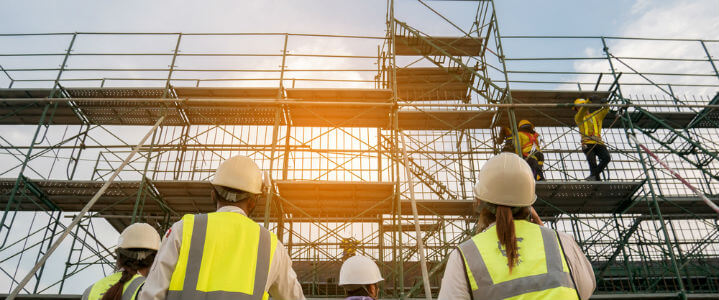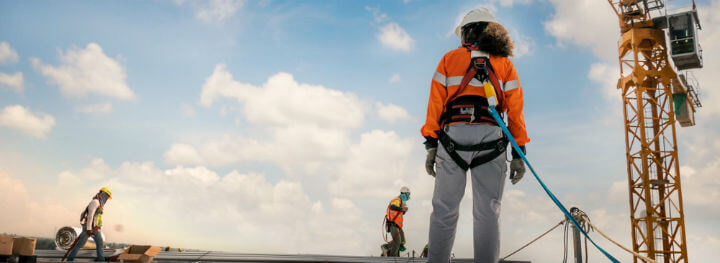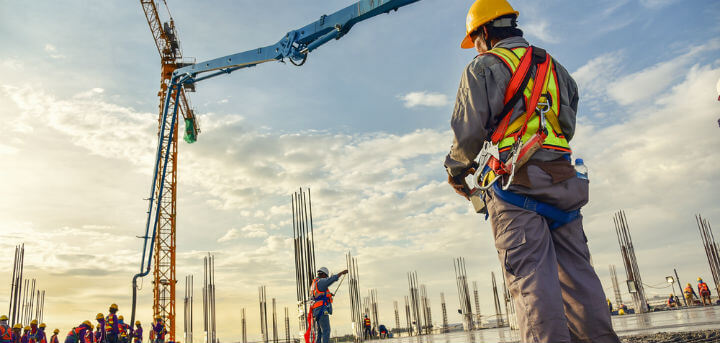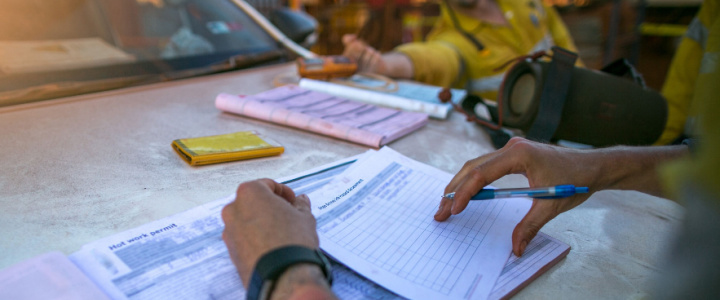Construction sites are a dangerous place to work, and safety must be taken seriously. To ensure workers’ safety, employers must follow OSHA safety guidelines and implement proper procedures on construction sites. This includes providing training to employees, as well as conducting regular inspections to identify potential hazards. In this guide, we’ll highlight specific OSHA standards and common hazards. You’ll also read about construction safety guidelines for employers and workers.
5 Key Construction Site Safety Procedures & Regulations
Few things in your company are as important as your construction safety checklist. Safety rules for construction workers are in place for a reason. Yet, every year, the safety aspects of a construction job are overlooked. And every year, life-threatening and even fatal accidents occur.
Join us as we take steps to prevent falls, explosions, chemical exposure, and more. The world is on the move, and it’s constantly growing. So the need for construction workers is great. But who wants to work in an environment that isn’t safe?
These particular OSHA safety guidelines for construction are part of the answer. Of course, it’s important to read comprehensive documentation from OSHA, but these five quick construction site safety tips will get you started!
Keeping your workplace and employees healthy and safe is the top priority. However, if you need professional help, use safety consulting companies like Safety by Design.
1. Scaffolding
We begin our safety guidelines for construction sites with scaffolding standards. Over half of all construction workers find themselves on scaffolding. Exposure to falls, falling objects, and even electrocution exist. Workers should follow general scaffolding safety procedures like wearing hard hats, non-skid boots, and tool lanyards. They should never work on wet surfaces or use boxes/ladders atop scaffolding.
They should never exceed the maximum load. And they should never move tools as they’re entering or leaving scaffolding. Tools should never be left behind on a scaffold. Personal fall arrest systems should always be inspected.

Employers must ensure that scaffolding is built and erected by a competent person. Competent persons should also oversee the daily inspection of scaffolding. Scaffolding should include guardrails, mid-rails, and toeboards. Further, it should be placed on solid footing and be fully planked.
2. Ladders
Moving along in our construction site safety checklist, we come to ladders. One of the leading causes of falls is improper ladder use. Workers should maintain at least three points of contact during the time on a ladder. As they ascend and descend, both feet and at least one hand, or both hands and a foot, should be on the ladder while moving. Tools should be carried up and down inside a tool belt. Or you may opt to pull things up once you’ve stopped climbing.
Employers should ensure employees understand how and when to tie ladders off. Avoid slipping. A competent person should inspect ladders daily. And any defective ladders should be marked as such and unused until repaired. All ladders should be OSHA-compliant. This includes job-made ladders. Learn more about OSHA ladder safety.
3. Fall Protection
Fall protection is one of the most essential elements in construction site safety guidelines. Employers must do a better job of ensuring proper fall protection systems. Falls are one of the leading causes of worker deaths in construction.
Workers should understand fall hazards in an area. All personal fall arrest systems should be inspected before use. Lanyards and lifelines should be used to keep workers from falling to the surface below.
Employers ensure that OSHA-compliant protection for working at heights safety is in place. This may include guardrails, safety nets, and personal fall arrest systems. Confined space safety and excavation safety considerations are paramount if you are working holes or excavations. Falling objects should be considered as well.

Use Safety by Design’s safety training in Houston for an expert opinion — when it comes to OSHA, you must follow all standards completely.
4. Head, Eye & Face Protection
Safety precautions during construction work must be taken when the head, eyes, and face are at risk. Eye and face protection should be worn in cases where loose particles, molten metal, chemical liquids, gasses, or vapors are in the area. These usually occur when any welding, grinding, chipping, sanding, drilling, etc., is taking place.
Workers are required to wear head protection if they could potentially be struck in the head. This means that construction site workers should always wear head protection. This is especially critical to suspended load safety.

Falling tools and other debris, electrical hazards, and even nail gun accidents could pose a threat. Swinging equipment could, too. Hard hats should be inspected for damage daily. They should fit on your head and never be loose as you’re working.
Employers are responsible for providing protection, and they may not charge employees the cost of the protection. It should be kept in good condition; if it’s damaged, it should be replaced immediately.
5. Hazard Communication
We hope you’re already following proper safety procedures in construction. You probably know that hazard identification and communication are vital. The OSHA standard focuses on employers. You should be aware of hazards in the workplace. Those that can be overlooked are silica, asbestos, lead, zinc, mercury, beryllium, and dust.
Workers should be trained to understand Material Safety Data Sheets (MSDS). And they should always wear appropriate PPE when cleaning or handling chemicals or spills. Employers are required to generate and implement written elements of a hazard communication program. All chemicals onsite should be recorded and tracked. Containers must be labeled as well. There should be an MSDS for every substance. And the employers themselves should be trained to know risks and proper handling instructions.

For more general construction safety, we’re here. As we wrap up our list of safety measures in the construction industry, you may have questions. Getting and remaining compliant isn’t easy.
Safety by Design Can Improve Your Construction Site Safety & Compliance
We hope you find these safety guidelines for construction workers and employers helpful. But don’t just read and understand — practice and preach on the job.
We specialize in helping companies like yours implement construction-safe work practices and procedures. So, don’t wait another minute. Reach out today!
Contact Safety by Design for the latest OSHA safety rules for construction. We’re up-to-date, experienced, and passionate about what we do.

Thank you for visiting our website! We appreciate your interest in workplace safety. Please note that Safety by Design is not affiliated with OSHA. However, we can assist you with the following OSHA-related services:
- OSHA Mock Inspection
- OSHA Training
- Facilitate OSHA Inspections and Citations
If you need to file a complaint with OSHA, please call 800-321-6742 (OSHA) or visit this page for other methods to contact them.



